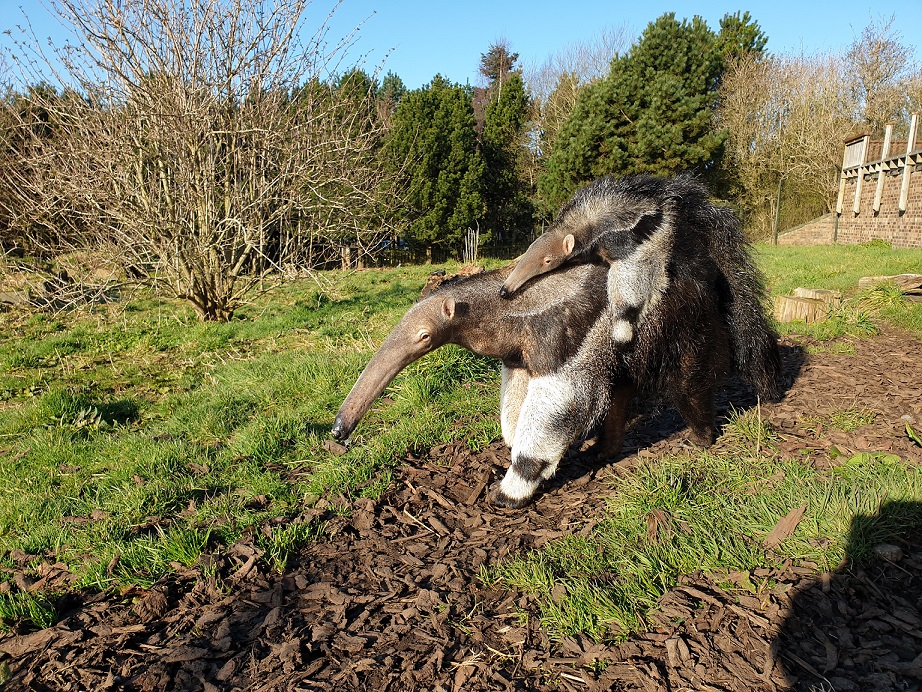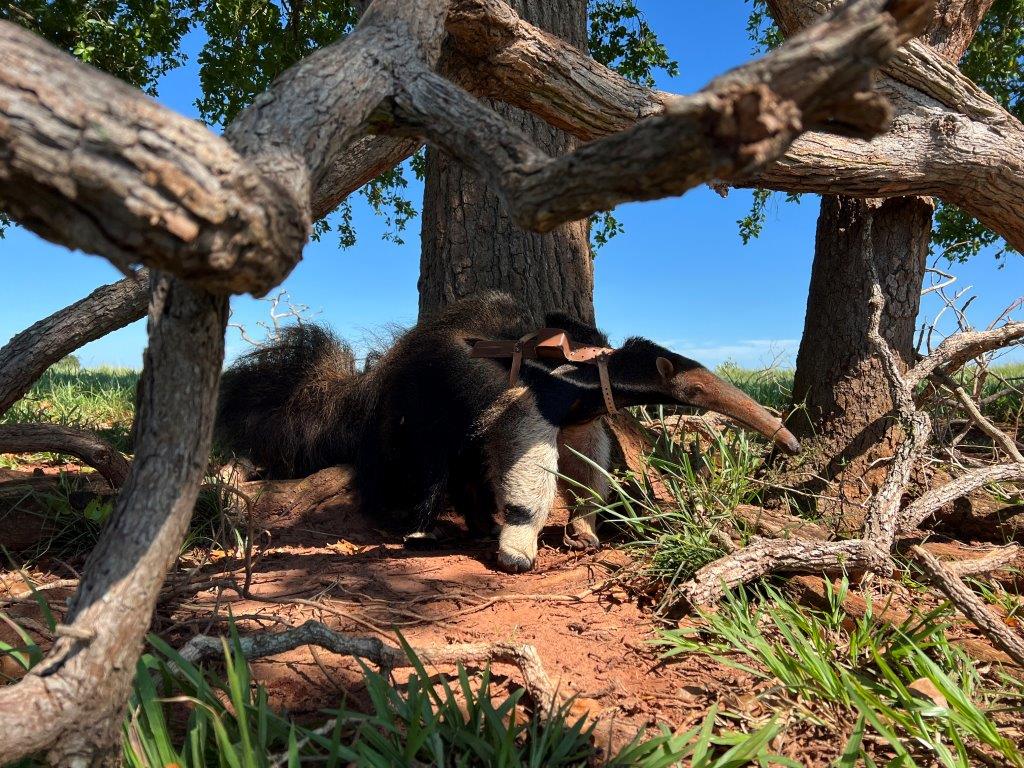Giant anteater
Myrmecophaga tridactyla

We are home to two giant anteaters here at the zoo. Our male, Zeferino, was born here in November 2019. Female Gizmo arrived in 2023 from Dudley Zoo.
Giant anteaters are fascinating mammals. They have a long, tubular snout and sticky tongue that can reach up to 60cm. This is perfect for slurping up thousands of ants and termites in a single day. They also have powerful forearms with sharp claws used to tear open ant hills or termite mounds.
They also have a distinctive tail, which they use as a parasol to keep themselves in shade as they rest.
They are native to Central and South America, inhabiting grasslands, savannahs and forests.
Population
Decreasing
Diet
Insectivore
Habitat
Rivers and wetlands
Fact file
Giant anteaters have no teeth and as their name suggests, their diet consists mainly of ants, termites and other insects
A female anteater will carry her baby on her back until it is almost half her size
They have sharp claws on their front feet, which they use for defence. They have been known to kill their main predators, including big cats like jaguars and cougars!
Latest giant anteater news
View all news/icas.jpg)
11 Oct 2024
Five minute read

03 Jul 2024
Five minute read
/icas anteater 2.jpg)
Saving giant anteaters in Brazil
Wild populations of giant anteaters are in decline due to habitat loss, hunting and the burning of sugar cane in their native Brazil. As part of our work with Wild Animal Conservation Institute (ICAS), we are supporting Dr Arnaud Desbiez and his team to research the effect road traffic has on populations of giant anteater, with the ultimate goal of making roads safe for both people and animals.
Find out more about ICAS
